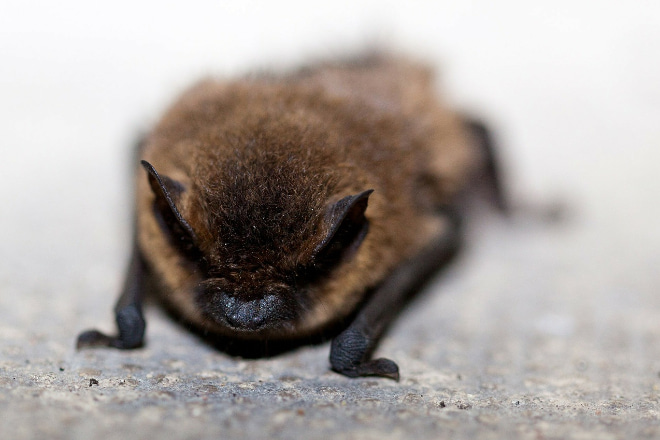Every animal has found a way to cope with the winter weather. Some hibernate, some change their diets, and some migrate south. The cold weather changes everything. Bats, like every other species, have found their own unique way to survive. These flying fur balls are nowhere to be seen during the winter because they hide or fly south to warmer climates. If you live in bat country, your attic may be susceptible to an invasion. Contact us today for tips on how to keep bats out for the winter. We provide humane and affordable bat removal and exclusion services.
In Canada, bats either fly south or hibernate for the winter. This is because they feed solely on insects, and with cold weather comes fewer bugs. To survive, they roost in enclosed areas like caves, abandoned mines, and tree hollows. Colonies of a dozen to a few hundred bats huddle together for warmth. During hibernation, bats drop their body temperatures between 3 and 6°C, and their heart rates slow to 10 beats per minute. Their deep sleep helps them to withstand the cold and wait until spring. Weather depending, bats usually hibernate between October and April.
In some cases, bats will choose to hibernate in attics. Attics are the perfect places for bats to hibernate because they are much warmer than natural alternatives. They are also very safe since they are seldom visited. The problem with housing bats for the winter, however, is that it will cause damage. Bats will leave guano on the floor of the attic, which will ruin the insulation. If you live in the country, near a forest or body of water, consider bat-proofing your home. Prevention is key because, by law, bats in hibernation must be left alone until the spring.
How to Bat-Proof the Attic
Bats are tiny, like little flying mice. Keep this in mind when looking for potential points of entry. If you can fit a ballpoint pen, you can fit a bat. Check for gaps between the soffits of your roof and the exterior walls of the home. If you find any, seal them shut with caulking or a combination of mesh and caulking. Those gaps are prone to letting in mice and bats. Following the soffits, check for gaps along the edges of the roof and seal those as well. For extra protection, hire a wildlife technician to cover roof vents with a bat-proof mesh.
Bats are a protected species in Ontario. Many species are threatened or endangered due to habitat loss and white-nose syndrome, a fungal disease that has killed millions of bats in the last decade. It is therefore important that we remove and exclude bats humanely. Contact your nearest wildlife removal company if you are worried about the bats in your area. A technician will perform an inspection and devise a safe removal plan. If you want to help, consider installing a bat house on your property. Contact Bat Control for humane and affordable bat solutions.
